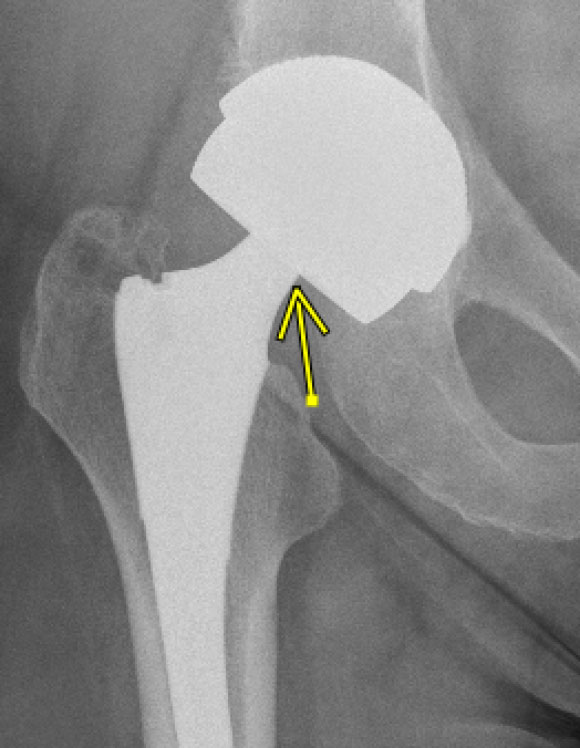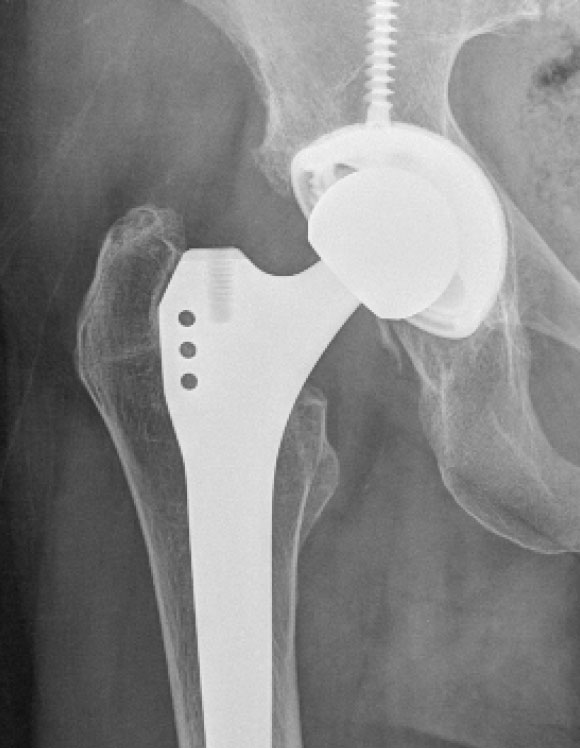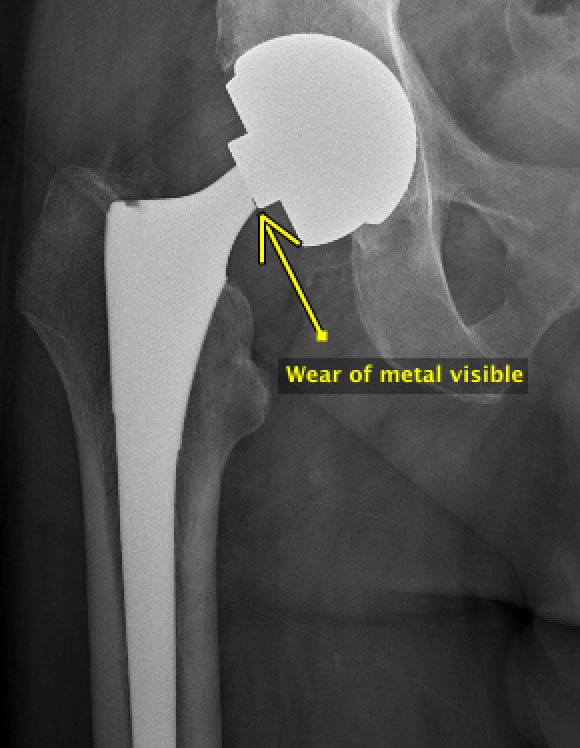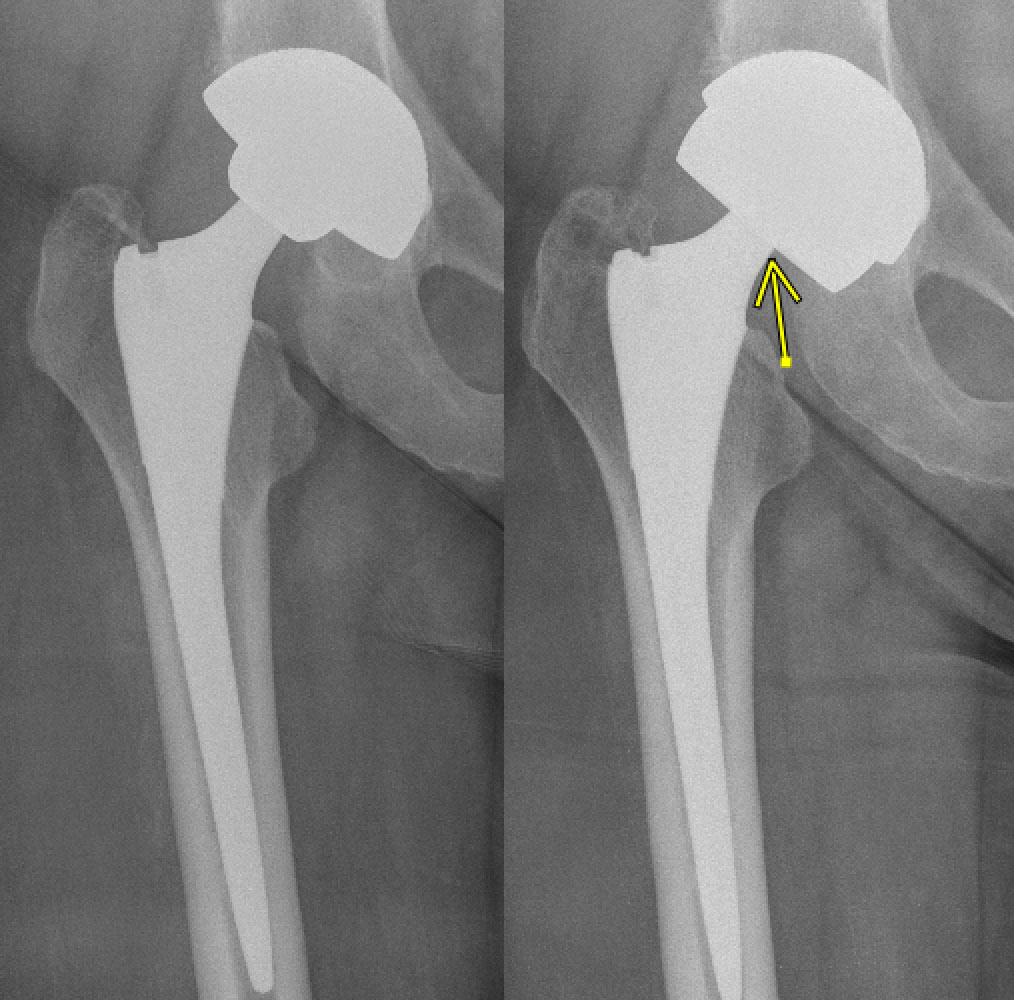Trunionosis / Metal on Metal problems
The Birmingham was the first of the Resurfacing hip replacement and became available in the late 90’s. It had a low dislocation rate, and early results were good. In older patients, a traditional hip replacement stem was used to avoid problems related to osteoporosis.
Some new brands appeared on the market, and started to have failures, but the modular Birmingham’s seems unaffected. With 10 year results, we can say the long term results are about average for hip replacements, but a few are appearing with problems of wear between the chrome-cobalt metal head and the titanium stem (see arrow in diagram). A small amount of wear occurring at this “trunion” seems to cause a wear products to collect in the joint, be “phagocytosed” by white blood cells, which can then damage the surrounding bone. The joint can be a little swollen, causing the joint to be stiffer than expected.
An idea to solve the problem has been to the leave metal shell in place, replace the large metal head with a smaller oxinium one, and used a polyethylene dual mobility liner between them. What is unknown about this solution is how long it will last, but we do know that alternative of removing the metal shell sometimes finds less bone to support a new socket than expected. Our current recommendation is to use a dual mobility liner in the older patients for an easier recovery, but replace the shell in younger patients.


Arrow point to the junction of the metal head and titanium stem. Wear at this location seems to cause a problem in about 1% of patients per year. The image on the right shows a new articulation, but keeping the existing cup & stem.

In this image the cup has been replaced with a new cup and plastic liner, the screw being used to ensure it fixes properly to bone.

In this instance the trunion was so damaged that the only option was to change the whole stem.

